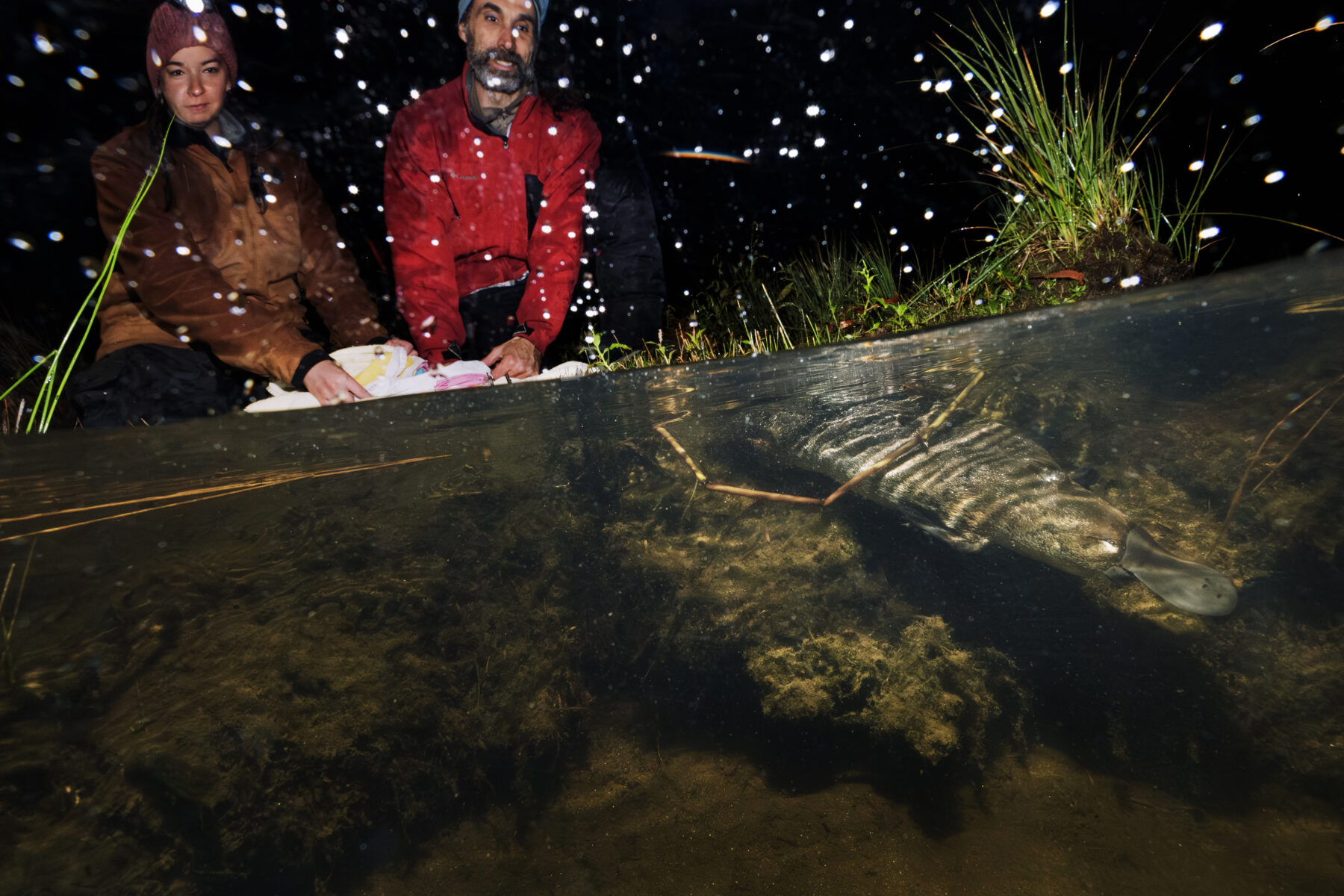Submerged in the wild: photographing elusive platypuses

Richard Freeman said that being asked to photograph the platypus reintroduction program for the University of New South Wales was an “amazing assignment”.
“I felt privileged to be able to document the incredible and valuable work that researchers Dr Gilad Bino and Dr Tahneal Hawke have been undertaking,” Richard said. “Another bonus is the fact that so few people actually get to experience these unique animals up close.”
Before the shoot, Richard did some research and realised there were very few photographs of platypuses in the wild. This is for a number of reasons – platypuses are timid, nocturnal, move rapidly and are extremely well camouflaged. “Trying to complicate things further, and a bit ambitiously, I thought it would be a good idea to try to get a single image below and above the water of a platypus being caught,” Richard said. “I underestimated many parts of this equation, not least of which was the fleeting moment I would have to take the shot, supposing we caught – or even saw – any. I was unable to get the split shot; if I’d entered the water I would have scared away any other platypuses before capturing was complete. However, I did manage to get an image in the pouring rain as Gilad and Tahneal released one on the last night I was with them.”

On the very first survey and capture evening, Richard found himself surrounded by bright-yellow poplar trees under a magnificent, clear starry night, not quite sure if he would even get to see one of the elusive monotremes, let alone photograph one. He was asked casually if he’d mind holding a pillowcase, the contents of which turned out to be a very animated platypus, fresh from the river. “I can only describe the experience as being like holding a small cat or puppy, in terms of weight and size,” he said.
Richard described the Snowy Mountains region in autumn as “simply stunning”. “Being immersed in the river systems, surrounded by world-class scenery, was breathtaking. Wherever I pointed the camera, there were photographs begging to be taken,” he said. The arduous nature of the platypus survey-and-capture evenings is not to be underestimated, Richard noted. He was only with the team for four nights but found fatigue made it difficult to concentrate after the second.
“The fortitude and mental resilience of Gilad and Tahneal is astonishing,” he said. “They will often work for 10 nights straight in the field, rain, hail, snow or shine. I think Tahneal said 17 nights was her record. Mind boggling!”


